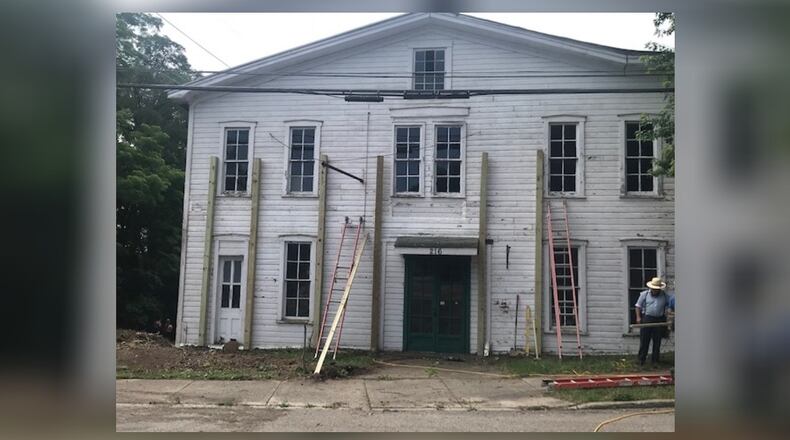The Buggy Whip building at 216 E. Main St. was constructed in the late 1880s after a mill that stood on the site was destroyed in a fire. The building first was used to produce buggy whips for drivers of horse-drawn buggies, a major form of transportation at the time. It later was used as a blacksmith shop, a car dealership and an antiques business. The building, which included an apartment, has been vacant for some time.
Property maintenance is not a new topic to the Tipp City Council. It has been part of biennial discussions by councils in recent years, most recently in February.
Gibson, an attorney, brought up the property maintenance project at a mid-June council meeting, with the condition of another property outside of the downtown at the center of those comments.
Goals, he said, were to “beef up our property maintenance code, starting with businesses, starting with the more egregious.”
Top among goals of the proposed property maintenance code would be public safety, along with maintenance and upkeep, Gibson said. Work on the project stemmed from the 2013 project that brought new infrastructure, including utilities, streets and sidewalks to the historic downtown.
“In order to promote our downtown and encourage a good quality of life, we need to take care of the place,” Gibson said. He added buildings in use are safe.
Hopes are the proposed code will before council before summer’s end, Gibson said.
“We hope to strike a balance between the need to maintain one’s historical property with the costs and efforts associated with it,” he said.
The building at 216 E. Main St. was last inspected by the Tipp City Fire Department in 2001, according to information provided by Cameron Haller, chief of emergency services. The fire department did a walk-through of the building eight to 10 years ago, according to members’ memory, he added.
“The occupancy has been privately owned and not a business that the Ohio Fire Code permits the ability to perform fire safety inspections,” Haller said.
The fire department’s current inspection practice is to attempt annual inspection, said Haller, who joined the department as chief last year. “We do not routinely inspect privately owned buildings that do not have a business,” he said.
The department hired an assistant chief to do inspections and help rectify the lack of inspecting all business annually, Haller said.
“All vacant and poorly maintained buildings pose an increased risk to life safety,” he said, adding the department, “is not aware of another business in our jurisdiction that is in the state of repair of 216 E. Main St.”
Miami County’s chief building inspector initially condemned the Buggy Whip building June 28 after an initial emergency review. The official, Rob England, said July 8 he was not involved in the building assessment at this point following a structural engineer’s assessment that it was not an imminent danger.
“I cannot speak for Tipp City on the report,” England said. “Typically, I only get involved in emergency situations where a structural engineer cannot be readily onsite or when asked by the Miami County Health District or local fire departments to give my opinion on a structure.”
City leaders said this week they would hold off on any enforcement action at the Buggy Whip building after receiving the structural engineer’s report that it doesn’t pose a threat and could be repaired. They are waiting for a requested schedule of repairs to copy with county and local codes.
About the Author
